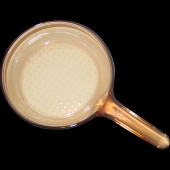
 4
4












"Study books and observe nature; if they do not agree, throw away the books." ~ William A. Albrecht
 2
2








"Study books and observe nature; if they do not agree, throw away the books." ~ William A. Albrecht
 1
1








Standing on the shoulders of giants. Giants with dirt under their nails




"Study books and observe nature; if they do not agree, throw away the books." ~ William A. Albrecht
 2
2








"Them that don't know him won't like him and them that do sometimes won't know how to take him... he ain't wrong, he's just different and his pride won't let him do the things that make you think he's right"
 1
1




James Freyr wrote:My wife and I like to use cast iron as well. We're still trying to get the seasoning layer on it to a point where eggs won't stick. I think being able to fry eggs is a good indicator of a properly seasoned pan. I hear it can be done, but we haven't quite achieved that level of non-stickness on our pans yet.




 1
1




James Freyr wrote:My wife and I like to use cast iron as well. We're still trying to get the seasoning layer on it to a point where eggs won't stick. I think being able to fry eggs is a good indicator of a properly seasoned pan. I hear it can be done, but we haven't quite achieved that level of non-stickness on our pans yet.




"Study books and observe nature; if they do not agree, throw away the books." ~ William A. Albrecht








Live now, and don't worry about what someone else thinks!





|
A new kitten. What are we gonna name it? How about tiny ad?
The new permaculture playing cards kickstarter is now live!
https://www.kickstarter.com/projects/paulwheaton/garden-cards
|







